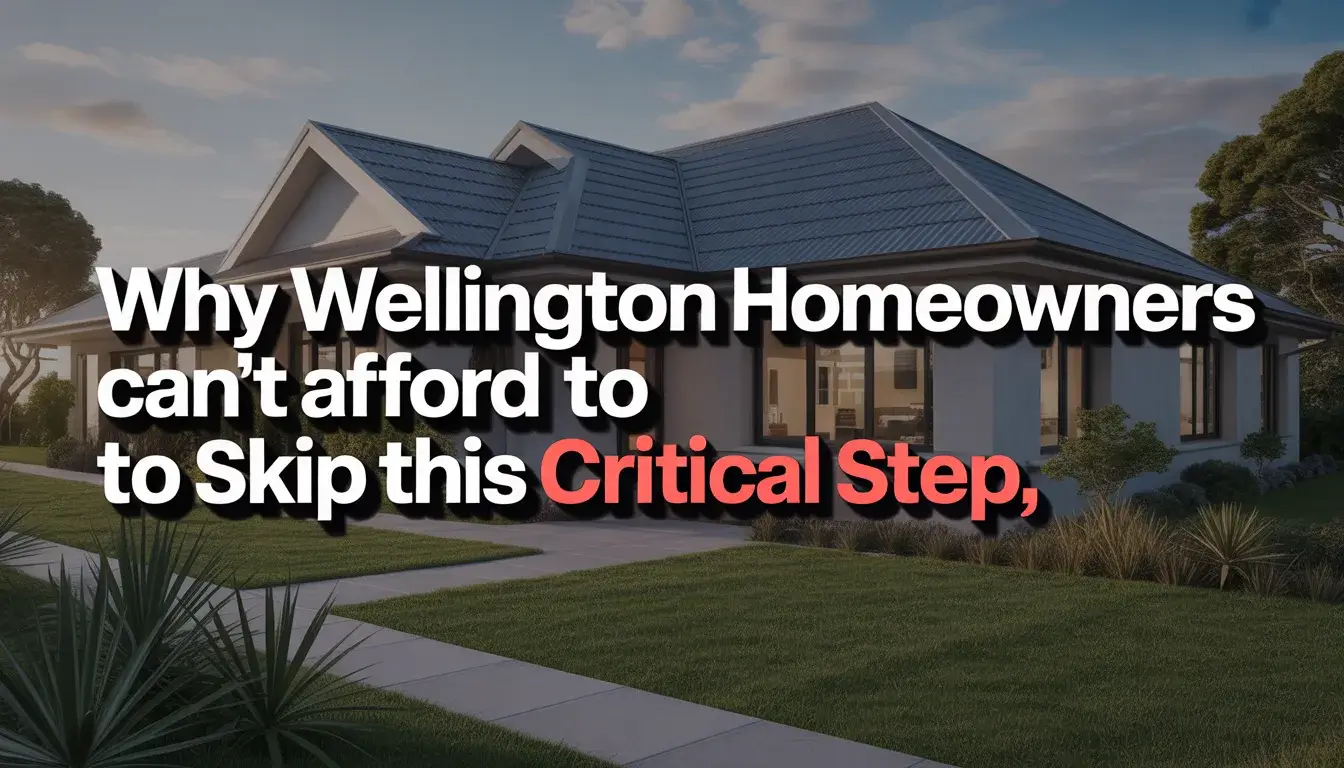
When it comes to roofing projects across the Wellington Region, precision isn’t just preferred – it’s legally required. A comprehensive roof specification serves as the foundation for successful roofing projects, ensuring compliance with New Zealand’s stringent Building Code whilst protecting your investment from costly mistakes. At Rockstar Roofing, we’ve witnessed firsthand how proper specifications save Wellington homeowners thousands of dollars and months of frustration.
Your roof specification isn’t simply paperwork to file away. It’s a critical document that determines whether your project meets legal requirements, qualifies for building consent, and protects your family’s safety. Skipping this step or cutting corners on specification quality can lead to devastating consequences that extend far beyond initial cost savings.
Understanding Roof Specifications in New Zealand Context
A roof specification differs fundamentally from your roof’s design drawings. Whilst design drawings show what your roof will look like, the specification details exactly how every component will be installed, what materials will be used, and how the entire system will comply with New Zealand’s Building Code requirements.
The specification provides a comprehensive breakdown of dimensions, materials, and components for every aspect of your roof system. This includes detailed information about roofing materials, underlays, flashings, ventilation systems, insulation, and fixings. Every measurement, angle, and material grade must be specified to ensure compliance with the relevant Building Code clauses.
New Zealand Building Code Compliance Requirements
The New Zealand Building Code sets minimum performance parameters for all roof design and construction. Understanding these requirements is crucial for Wellington homeowners planning roofing projects, as non-compliance can result in significant legal and financial consequences.
Key Building Code clauses that apply to roof specifications include B1 Structure, ensuring your roof system accommodates wind loads, snow loads, and dead loads specific to Wellington’s conditions. B2 Durability requires that roof cladding achieve a minimum 15-year durability period, whilst supporting structures must last at least 50 years.
E1 Surface Water requirements ensure your roof effectively disposes of Wellington’s substantial rainfall, whilst E2 External Moisture provisions keep water outside your building envelope. E3 Internal Moisture requirements minimise condensation risks within roof spaces, particularly important in Wellington’s humid coastal climate.
Additional clauses may apply depending on your specific project. C Protection from Fire rules apply to roofs adjacent to neighbouring buildings, whilst H1 Energy Efficiency requirements prescribe minimum thermal insulation levels based on Wellington’s climate zone.

Building Consent Requirements for Wellington Properties
Most roofing work in Wellington requires building consent, and your roof specification plays a pivotal role in obtaining approval. The building consent process ensures your project meets all relevant Building Code requirements before construction begins.
For new roofing as part of dwelling construction or extensions, building consent is mandatory. Re-roofing existing properties may require consent depending on factors such as material changes, structural modifications, or durability requirements. If your existing roof has failed before reaching its 15-year durability requirement, building consent becomes necessary to ensure the replacement system meets Code requirements.
Wellington City Council, as your Building Consent Authority, requires comprehensive documentation demonstrating Code compliance. Your roof specification must clearly show how each Building Code clause will be satisfied, including material standards, installation methods, and performance criteria.
The Cost of Getting It Wrong
Wellington homeowners who proceed without proper specifications face significant risks. Building work undertaken without required consent can result in fines up to $200,000, plus additional daily penalties of $20,000 for continued non-compliance. Wellington City Council can also issue notices to fix, impose instant fines up to $1,000, or even require removal of dangerous work.
Beyond legal penalties, inadequate specifications often lead to installation problems that require costly remediation. Poor material selection, incorrect installation methods, or non-compliant details can cause premature failure, water damage, and insurance complications. These issues frequently cost ten times more to resolve than proper specification would have cost initially.
Insurance complications represent another hidden cost. Many insurance policies exclude coverage for work that doesn’t comply with Building Code requirements or wasn’t properly consented. This leaves homeowners personally liable for damage resulting from non-compliant work.
Acceptable Solutions vs Alternative Solutions
New Zealand’s Building Code provides two primary compliance paths that directly impact your roof specification requirements. Understanding these paths helps Wellington homeowners make informed decisions about their roofing projects.
Acceptable Solutions provide prescriptive methods for achieving Code compliance. E2/AS1 covers common roofing materials including masonry tiles, pressed metal tiles, profiled metal cladding, and membrane systems. Following an Acceptable Solution means automatic compliance with relevant Building Code clauses, simplifying the consent process.
When your roofing project falls outside Acceptable Solution scope, Alternative Solutions become necessary. This might occur when using innovative materials, unusual configurations, or specific performance requirements. Alternative Solutions require additional documentation demonstrating Code compliance through testing, expert opinions, or proven performance data.
Rockstar Roofing’s experience with both compliance paths ensures your specification takes the most appropriate route for your specific project, minimising consent delays whilst ensuring robust performance.
Material Standards and Performance Requirements
Your roof specification must reference appropriate New Zealand and Australian standards governing roofing materials and components. These standards ensure materials perform adequately in Wellington’s challenging coastal environment.
Different roofing materials have specific minimum slope requirements under E2/AS1. Long-run metal roofing requires minimum slopes ranging from 3° for trough profiles to 8° for corrugated profiles. Metal tiles require 12° minimum slope for standard profiles, whilst concrete and clay tiles have varying requirements based on profile type and rafter length.
Material durability becomes particularly important in Wellington’s salt-laden coastal environment. Your specification must demonstrate that selected materials can withstand local conditions for their required durability period. This includes considerations for corrosion resistance, UV stability, and thermal cycling performance.
Professional Specification Services
Creating comprehensive roof specifications requires detailed knowledge of Building Code requirements, material standards, and local conditions. Professional specification services ensure your project meets all necessary requirements whilst optimising performance for Wellington’s unique environment.
At Rockstar Roofing, our specification services draw on years of experience with Wellington’s Building Consent Authority and deep understanding of local conditions. We ensure every specification addresses relevant Building Code clauses, references appropriate standards, and provides clear compliance pathways.
Our comprehensive approach includes material selection appropriate for coastal conditions, detailed installation procedures that ensure durability, and coordination with other building systems such as insulation and ventilation. This thorough approach prevents the delays and complications that arise from incomplete or inadequate specifications.
The Value of Professional Installation
Even the best specification becomes worthless without proper installation. Professional installation ensures your roof performs as specified whilst maintaining warranty coverage and Building Code compliance.
Rockstar Roofing’s installation teams understand how specifications translate into real-world construction practices. Our experience with Wellington’s variable weather conditions, coastal exposure, and seismic requirements ensures installations that exceed minimum Code requirements whilst providing long-term reliability.
Professional installation also includes proper documentation of completed work. This documentation becomes essential for warranty claims, insurance purposes, and future maintenance or modifications.
Long-term Protection Through Maintenance
Your roof specification should include maintenance requirements necessary to achieve specified performance and durability. Regular maintenance preserves the performance characteristics detailed in your specification whilst maintaining warranty coverage.
Making the Right Choice for Your Wellington Home
Wellington homeowners face unique challenges that make proper roof specification absolutely critical. Coastal exposure, seismic activity, high winds, and substantial rainfall create demanding conditions that require careful material selection and installation planning.
Your roof specification determines whether your investment provides the protection and performance your family deserves. Proper specification ensures Building Code compliance, optimises performance for local conditions, and provides the documentation necessary for consent approval and warranty coverage.
Don’t risk your family’s safety or your financial investment by cutting corners on roof specification. Professional specification services represent a small fraction of your total roofing investment whilst providing protection against far larger potential costs.
At Rockstar Roofing, we understand that your roof represents more than shelter – it represents security, comfort, and protection for everything you value. Our commitment to comprehensive specification ensures your roofing project delivers the performance and peace of mind you deserve.
Contact Rockstar Roofing today to discuss your roofing project and learn how our professional specification services can protect your investment. Your family’s safety and your property’s value depend on getting this critical step right.

Comments are closed